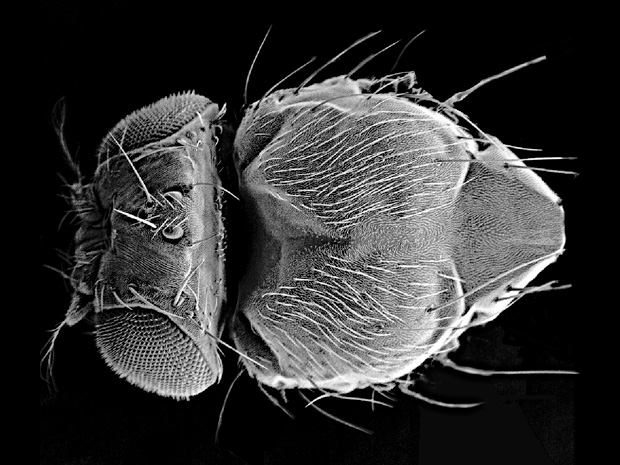Surprisingly stable long-distance relationships
Contrary to what was thought, sequences of DNA called enhancers – which control a gene’s output – find their targets long before they are activated during embryonic development, scientists at EMBL Heidelberg have found.

As well as these surprisingly stable long-distance relationships, the study, published in Nature, also reveals that the degree of complexity of enhancers’ interactions in the ‘simple’ fruit fly Drosophila is comparable to what is seen in vertebrates.
“As an embryodevelops, there are huge changes in transcription, much of which drives developmental progression: genes are changing from on to off, and off to on – but the contacts between enhancers and their target genes remain largely unchanged,” says Eileen Furlong, who led the work. “Enhancers regulate transcription, so it was really surprising that there are few changes in their interactions at a time when transcription is changing.”
To activate a gene, an enhancer has to come into contact with the portion of DNA at the start of the gene – its promoter. For enhancers that are located far away from their targets, the cell achieves this by looping the DNA around to bring about that contact. Yad Ghavi-Helm, a postdoctoral fellow in Furlong’s lab, found that, in developing fruit fly embryos, these DNA loops are formed, contact is established, and the cell’s gene-reading machinery is recruited, hours before the gene is expressed. “Yad, with the help of Alexis [Perez Gonzalez] at the Flow Cytometry Core Facility, made a huge effort to look at this in a cell-type specific way, and it was actually quite disappointing at first to do all that work and not see any changes between cell context, but that very surprising result was in itself very interesting.” The finding indicates that the whole system is primed in advance, ready to spring to action when needed. The sequencing itself was done with the support of the Genomics Core facility.
Drawing on data analysis expertise from computational biologists Tibor Pakozdi from the Furlong lab and Felix Klein from Wolfgang Huber’s group, Ghavi-Helm looked at over 100 enhancers that are known in Drosophila and mapped what genes they establish contacts with. The team discovered that these genetic regulators act across long distances in the genome, and in complex ways. Such a prevalence of long-distance action and such complex interactions were previously known to be widespread among vertebrates, but these findings show that they evolved much earlier.
For Furlong, Ghavi-Helm and colleagues, the study opens up a plethora of further questions: At what point in an embryo’s life do enhancer loops form? And how long after a gene has been switched off do the loops remain? If loop formation isn’t the trigger for gene activation, what is? What’s the exact role of the contacts they have found? And finally, a technically challenging question: unravelling if all an enhancer’s interactions are happening at the same time in the same cell.



